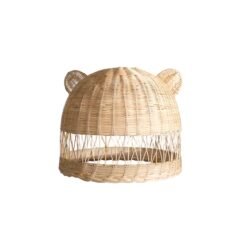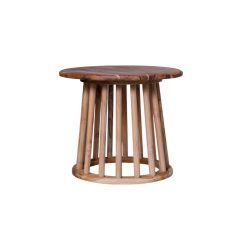As global supply chains face increasing pressure from shipping delays, rising transportation costs, and geopolitical uncertainties, nearshoring has emerged as a promising strategy for the furniture industry — including rattan furniture manufacturers. But what exactly is nearshoring, and why is it gaining traction? Let’s explore the key benefits of nearshoring rattan furniture production.
What Is Nearshoring?
Nearshoring means moving production closer to your primary markets rather than sourcing from distant countries. For example, a European furniture retailer might shift from sourcing rattan furniture in Southeast Asia to working with manufacturers in Eastern Europe or North Africa.
Benefits of Nearshoring Rattan Furniture
1. Faster Lead Times
Nearshoring significantly shortens shipping distances and customs processing, resulting in quicker turnaround times. Faster lead times allow you to react to seasonal trends, manage inventory better, and reduce the risk of stockouts.
2. Lower Transportation Costs
Moving production closer to your target market cuts down on ocean freight charges and other transport expenses. With container prices rising globally, nearshoring can help protect profit margins.
3. Improved Flexibility
Shorter distances make it easier to adjust orders, change product specifications, or manage production schedules on the fly — a huge advantage in today’s fast-moving market.
4. Greater Supply Chain Resilience
Nearshoring reduces reliance on faraway suppliers, which lowers the risk of delays caused by port closures, geopolitical tensions, or long transit routes. This creates a more resilient and predictable supply chain.
5. Stronger Collaboration
Working with regional manufacturers can make it easier to communicate, conduct factory visits, and build deeper relationships. Cultural similarities and fewer time-zone differences can further enhance collaboration and quality control.
6. Sustainable Branding
Shorter shipping routes and regional partnerships reduce carbon emissions, aligning with growing consumer demand for environmentally responsible products. Marketing “locally made” or “regionally produced” rattan furniture can also be a powerful selling point.
Challenges of Nearshoring
Of course, there are also challenges:
⚠️ Limited rattan raw material availability in some nearshore regions
⚠️ Potentially higher labor costs compared to traditional sourcing countries
⚠️ Fewer experienced rattan artisans in some areas
However, with the right investments in skills and sustainable supply chains, these challenges can be managed.
Final Thoughts
Nearshoring rattan furniture production offers clear benefits in flexibility, speed, cost efficiency, and sustainability. As buyers demand more responsive and eco-friendly supply chains, nearshoring may become a key competitive advantage for rattan furniture brands looking to thrive in a dynamic global market.





